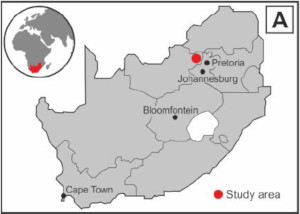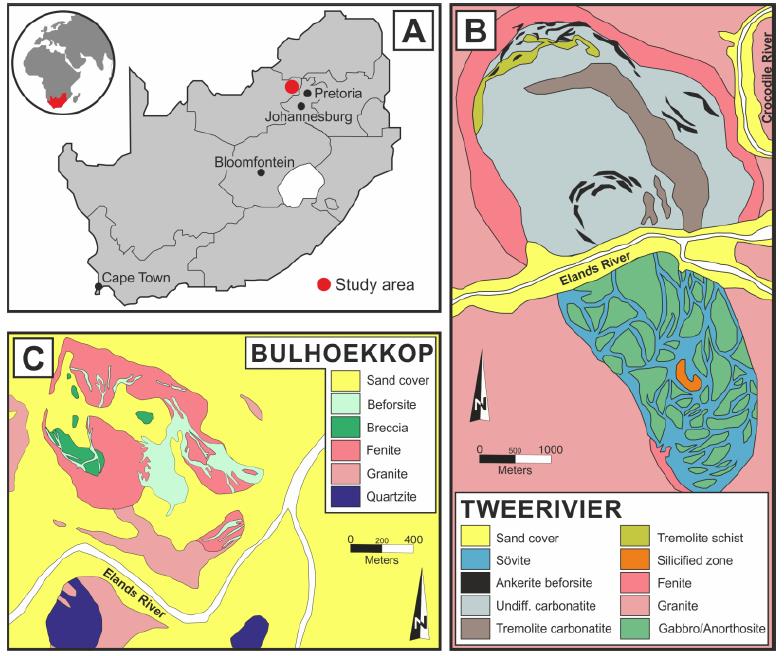
Effect and significance of contamination-related compositional melt variations of the Tweerivier and Bulhoekkop carbonatites, South Africa, with special reference to their REE mineralization
- Ansprechperson:
- Förderung:
DFG grant WA3116/4-1
This is a joint project of the Geochemistry & Economic Geology of KIT and the
Mineralogical museum at the Technical University of Berlin. REE enrichment in carbonatitic melts are generally explained by a combination of parameters, including low-degree melting of geochemically enriched mantle sources, carbonate-silicate melt immiscibility, crystal fractionation, melt-aqueous brine immiscibility and hydrothermal alteration. However, the effect of crustal contamination, as a potential first order process is only weakly constrained. Nevertheless, our recent study of Kaiserstuhl carbonatites clearly provided evidence that the interaction of carbonatite magma with silicate wall rocks can enable strong REE enrichment in apatite via the britholite substitution mechanism involving Si. Based on the results from the Kaiserstuhl, the role of variable contaminants needs to be tested in detail to show if this process is of general importance in carbonatitic systems.
This project will investigate the impact of carbonatite-country rock interaction on REE enrichment in carbonatites. The study will be performed using field examples from the Tweerivier and Bulhoekkop carbonatites in the Republic of South Africa which are known to bear a large variability of crustal xenoliths and xenoliths of associated silicate rocks and contain variable amounts of silicate minerals (amphibole, clinopyroxene, mica, tremolite) that may indicate crustal contamination.
To test this hypothesis, whole rock data (XRF and ICP-MS), textural, mineral chemical and isotopic data (microscopy, EMPA, C and O-isotope systematics) will be carried out for the different carbonatites samples to study the effect of contamination by Fe, Mg, Al and Si-rich lithologies. The expected results will allow for (1) Identification of the influence of contamination on the REE pattern of the residual melt. (2) Identification of mineralogical and compositional variation of major mineral phases.

